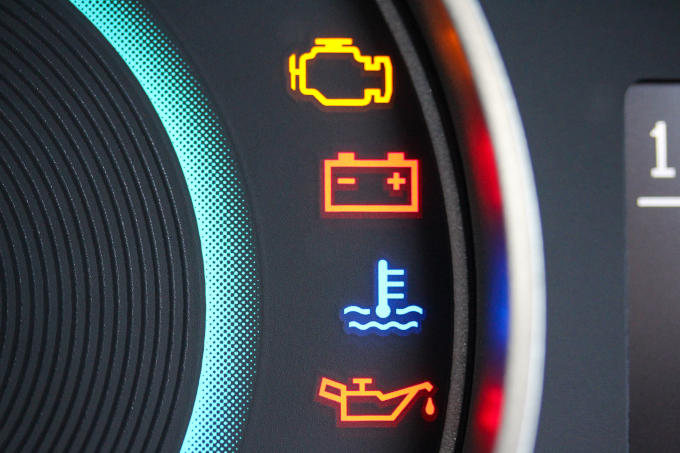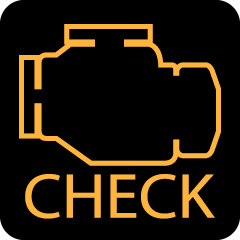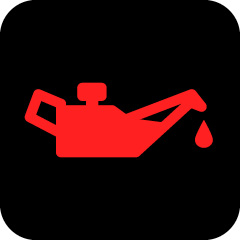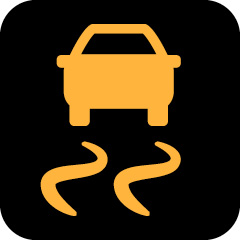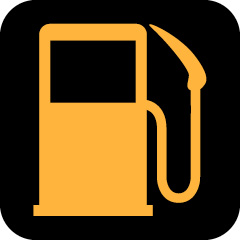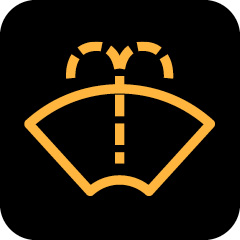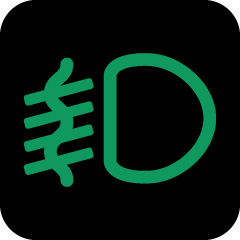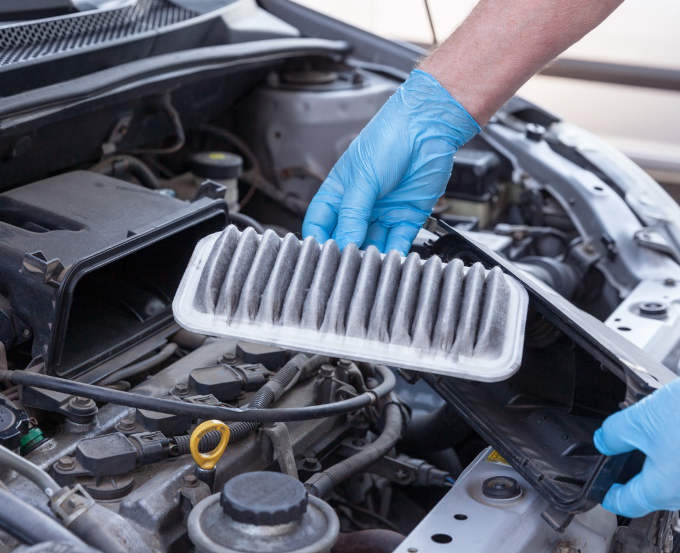Whether you have an older vehicle with a more old-fashioned display or a stunning new all-digital display, the dashboard and instrument clusters are a veritable Christmas tree of color and meaning.
As pretty as they look, it’s vital that you’re familiar with a vehicle’s dashboard lights as a driver. These lights function as warnings or alerts to prompt you to action—whether to put air in your tires or seek the help of a mechanic.
Dashboard Warning and Reminder Lights
1. Check Engine (CEL)
The “Check Engine” light (CEL) means an issue within a critical system connected to your engine has been detected. There is a large spectrum of problems that can be going on: A faulty oxygen sensor, bad spark plugs, or a bad mass airflow sensor. It could also be catastrophic, like a failing catalytic converter or something mundane like a loose gas cap.
The CEL typically behaves in one of two ways: Steady or blinking. A steady light denotes an issue within the engine or transmission that the vehicle cannot correct, and attention from a professional is needed.
However, if the CEL is flashing, there is a serious malfunction, and damage could be imminent or already occurring. In that case, you need to pull over immediately—or leave your car on the driveway and call for assistance. It’s not safe to drive with a flashing CEL.
2. Oil Pressure Warning
The famous little oil can, sometimes thought of as the Aladdin’s lamp or a coffee pot, tells you the oil is running low or that not enough oil is circulating the engine. Either way, it’s bad news and means you need the immediate help of a mechanic to check the oil level. Your engine will not work for long without proper lubrication, and you could face potential engine failure and expensive repairs.
3. Engine Temperature Warning
The thermometer sitting on the wavy red lines is another stark warning that the temperature within the engine is rising to dangerous levels. Overheating could be due to too much friction, usually caused by a lack of coolant, oil, or other issues. At any rate, too much heat is the bane of your engine, and you need to do something about it quickly.
4. Battery Alert
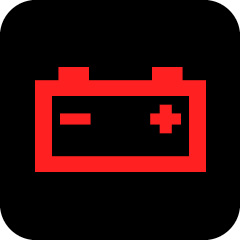
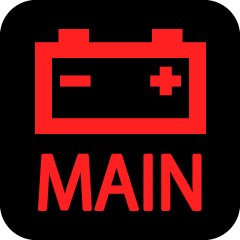
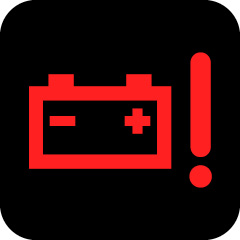
The battery gets your vehicle started and provides an emergency power supply if there’s a problem with the alternator. If you see the red battery light on your dash, it indicates that your vehicle’s charging system is faulty or experiencing a malfunction. It might also mean a broken alternator belt. If you see this in conjunction with dimming headlights of flickering electronics in the car, then your battery or alternator may be failing.
The battery alert in Electric Vehicles (EVs) or Hybrids is a battery symbol with “MAIN” underneath. It has a different meaning than the battery warning light in internal combustion engine (ICE) vehicles. This warning light means there is a serious issue with the battery, and the vehicle should be seen by a technician immediately. This warning light can also be portrayed as a battery with an exclamation mark next to it.
5. Seat Belt Reminder

Finally, for these crucial lights, we have the seat belt reminder light. As the name suggests, it alerts you that a passenger doesn’t have their seat belt fastened when the car is in motion. It will typically come with an audio reminder (usually in the form of a dinging sound) as well, so it’s hard to miss.
6. Tire Pressure Light
If the air pressure in one or more of your tires is below the OEM-recommended level, you‘ll see this light appear as a yellow exclamation point in a round frame with tire-like tread on the bottom. Low tire pressure can be dangerous, especially in bad weather conditions.
7. Traction Control Light / Traction Control Malfunction Light
The red traction control light appears as a vehicle’s back view with wavy track lines and indicates that your traction control system is active. This light means your car is using your anti-lock brake system ABS to see if you are experiencing uneven wheel spin. When driving in snow or rain that may reduce traction, this feature is handy.
If this system malfunctions, you’ll usually see a counterclockwise arrow circling a yellow triangle with a black exclamation point. Beware if you see this sign in slick road conditions.
8. ABS Warning Light
The framed yellow circle with “ABS” in it indicates that your anti-lock brakes are experiencing some kind of fault or malfunction. Any brake issue presents safety issues with your car, so don’t waste time before getting a professional to take a look.
9. Low Fuel Light
A yellow fuel pump light means you’re running low on gas and need to fill up soon. You shouldn’t ignore this one—regularly running too low on gas is bad for your fuel system and can damage it.
10. Airbag Light
If you see a passenger in yellow/orange with a circle in front of their head, it indicates that the airbag is faulty. As an obvious safety problem, you shouldn’t attempt any journey while this light is active. Malfunctioning airbags can injure and kill drivers and passengers.
11. Windshield Washer Light
When you see this, which looks like a windshield, wiper, and “spray” of orange dash lines, it means you’re low on washer fluid and need to top up. Don’t miss this because a dirty windshield dramatically reduces visibility and makes driving more dangerous, especially in inclement weather.
12. Fog Light Indicator
This downward-pointing yellow light symbol shows that your fog lights are active. It’s important to know what that one means because many people activate fog lights accidentally or leave them on at times when they shouldn’t be used. They are very bright and can dazzle others and should only be used in times of low visibility.
What to Do When You See a Vehicle Warning Light
Never be afraid of giving yourself a refresher course in basic knowledge like these warning light meanings, as well as other controls and functions of your vehicle. If you’ve forgotten any key knowledge, then crack open your owner’s manual and read up.
As for dealing with vehicle warning lights, here are some additional tips:
Is it a Blinking or Solid Light?
On the dash display, the majority of the lights appear as solid and steady lights. As mentioned above, one that flashes is the CEL, which denotes a much more serious issue. If you see other lights appearing to flash, it actually might mean that your battery is failing or that you had a faulty sensor. Only the CEL flashes to denote more severe issues.
Is It Yellow or Red?
The general rule is that red lights are more urgent than yellow, but yellow doesn’t mean you should pay less attention. If you see any yellow/orange or red light, you should have the problem seen immediately. If you can resolve the issue yourself (e.g., tire pressure), see to it quickly—don’t procrastinate.
When in Doubt, We’re Here to Help
If a warning light flicks on that may seem like trouble, visit us at AAMCO Lee’s Summit and get a professional eye to look over the vehicle. Some warning lights do come on through sensor faults, and nothing dangerous is going on. In any event, it’s crucial to have the vehicle checked by a qualified technician at the earliest opportunity. Knowing the meaning of the different symbols is half the battle and should help prompt you to take action and stay safe on the road.



